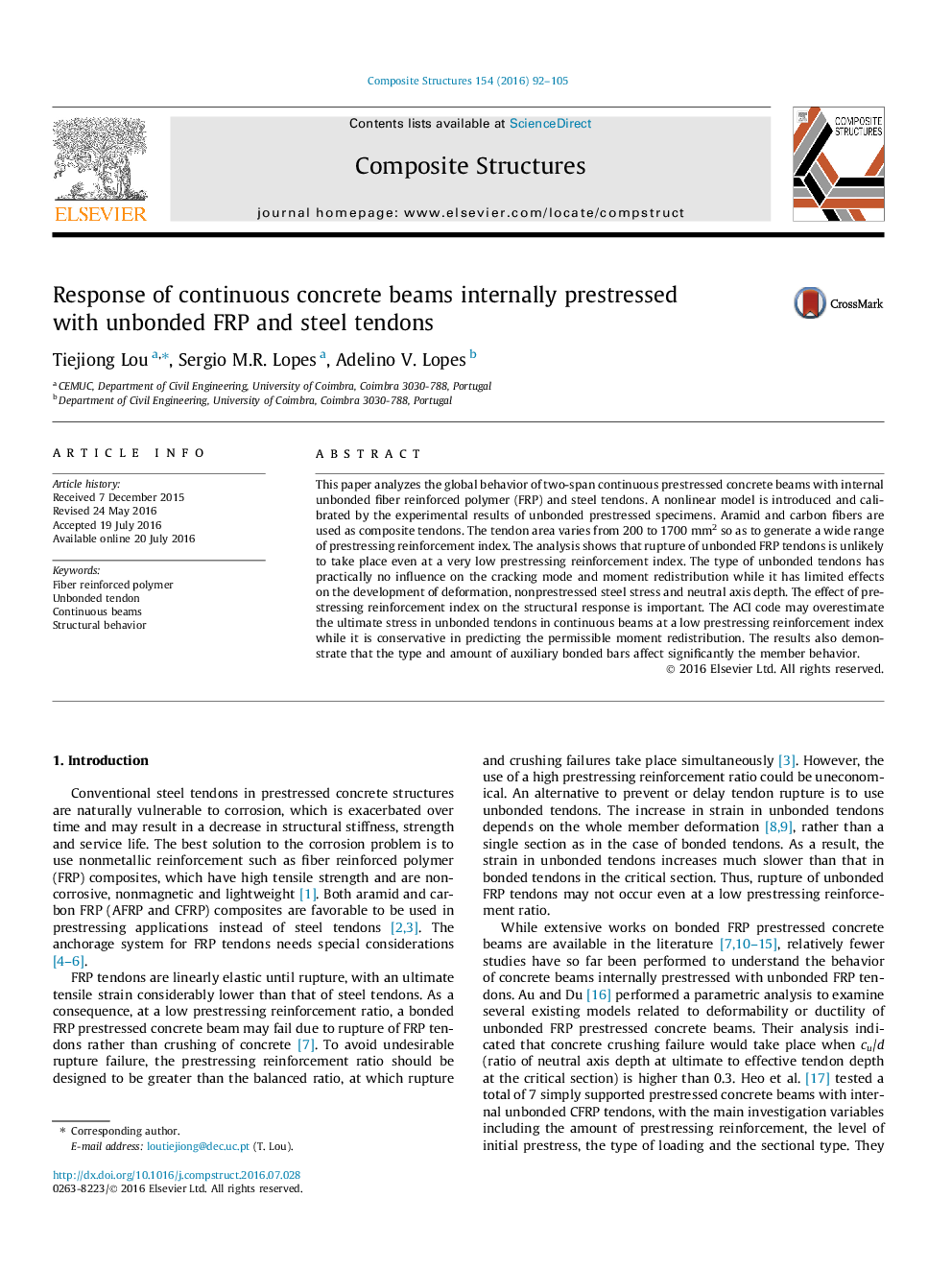| Article ID | Journal | Published Year | Pages | File Type |
|---|---|---|---|---|
| 250721 | Composite Structures | 2016 | 14 Pages |
This paper analyzes the global behavior of two-span continuous prestressed concrete beams with internal unbonded fiber reinforced polymer (FRP) and steel tendons. A nonlinear model is introduced and calibrated by the experimental results of unbonded prestressed specimens. Aramid and carbon fibers are used as composite tendons. The tendon area varies from 200 to 1700 mm2 so as to generate a wide range of prestressing reinforcement index. The analysis shows that rupture of unbonded FRP tendons is unlikely to take place even at a very low prestressing reinforcement index. The type of unbonded tendons has practically no influence on the cracking mode and moment redistribution while it has limited effects on the development of deformation, nonprestressed steel stress and neutral axis depth. The effect of prestressing reinforcement index on the structural response is important. The ACI code may overestimate the ultimate stress in unbonded tendons in continuous beams at a low prestressing reinforcement index while it is conservative in predicting the permissible moment redistribution. The results also demonstrate that the type and amount of auxiliary bonded bars affect significantly the member behavior.
